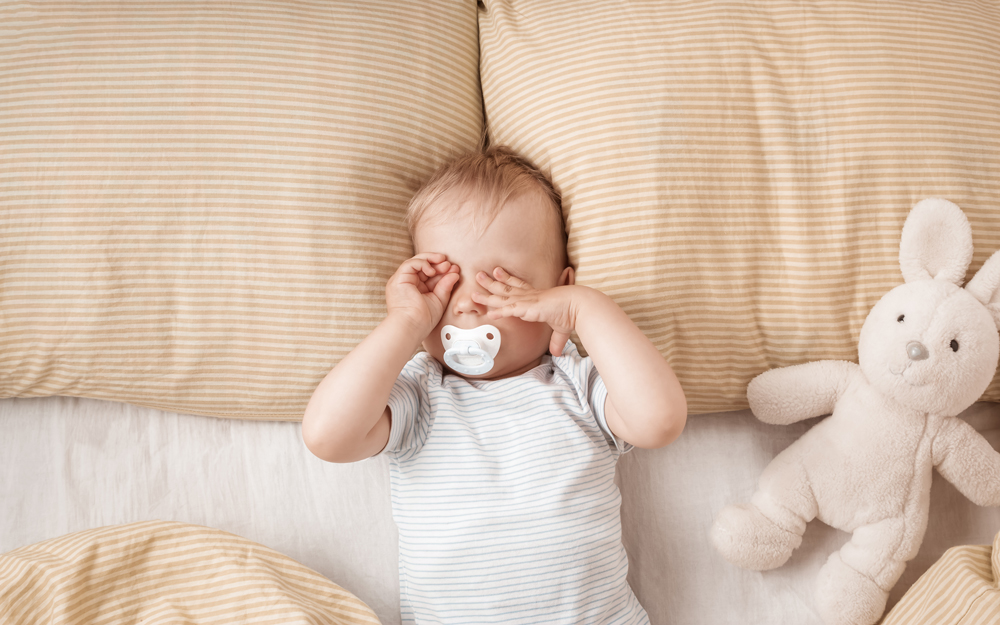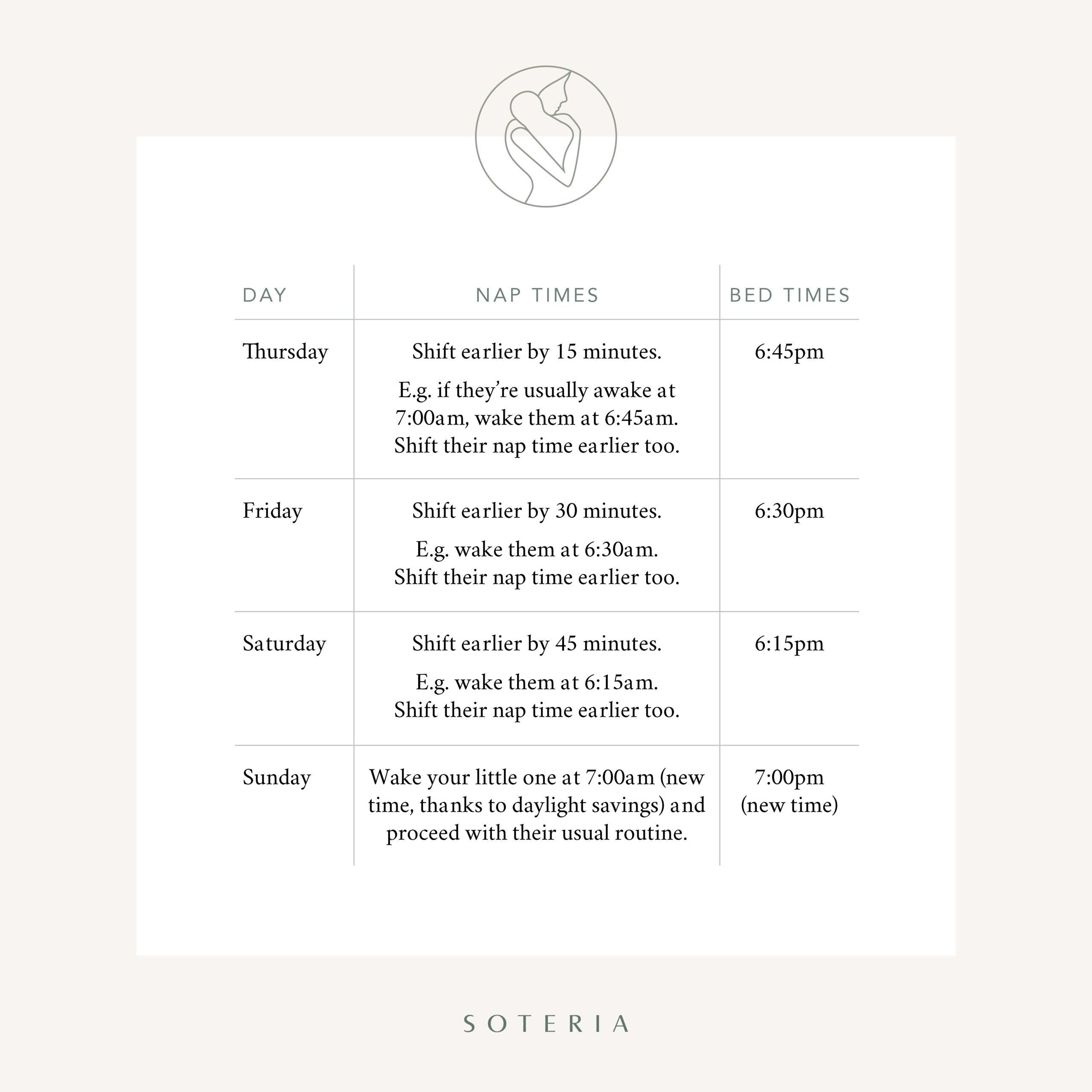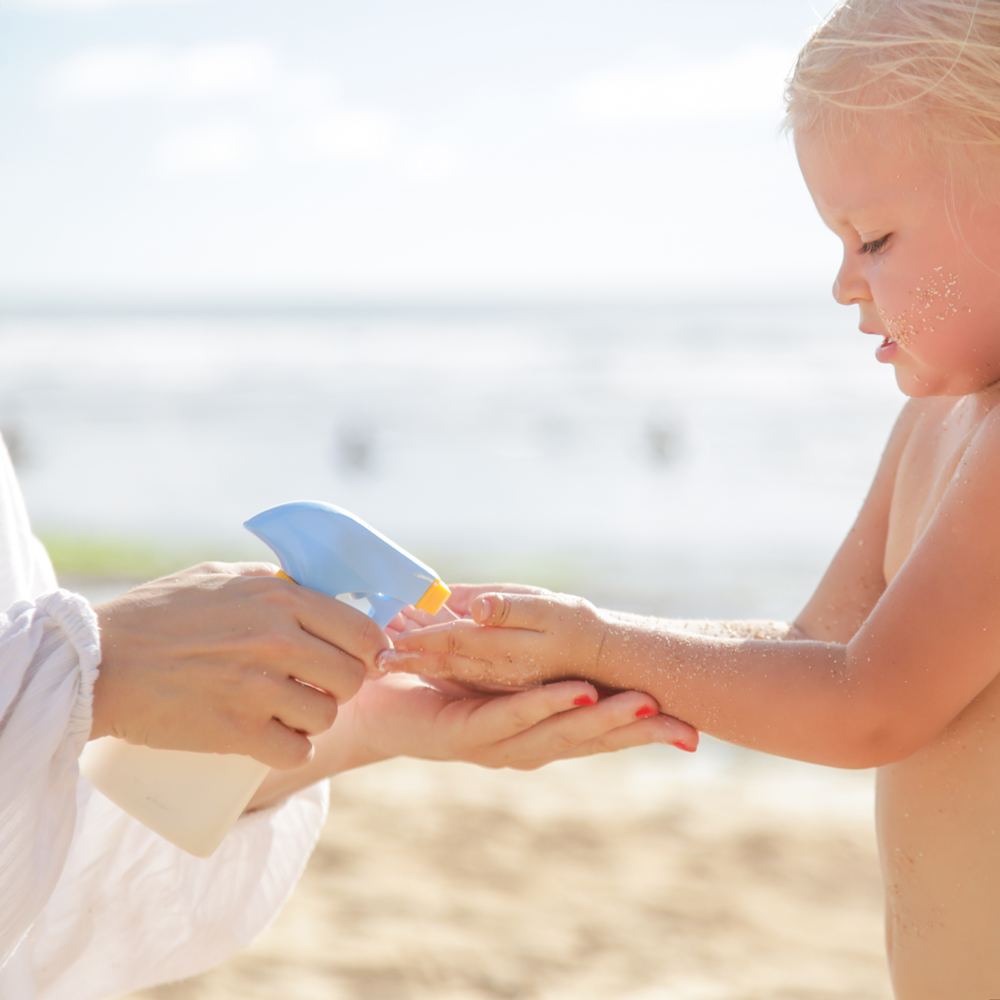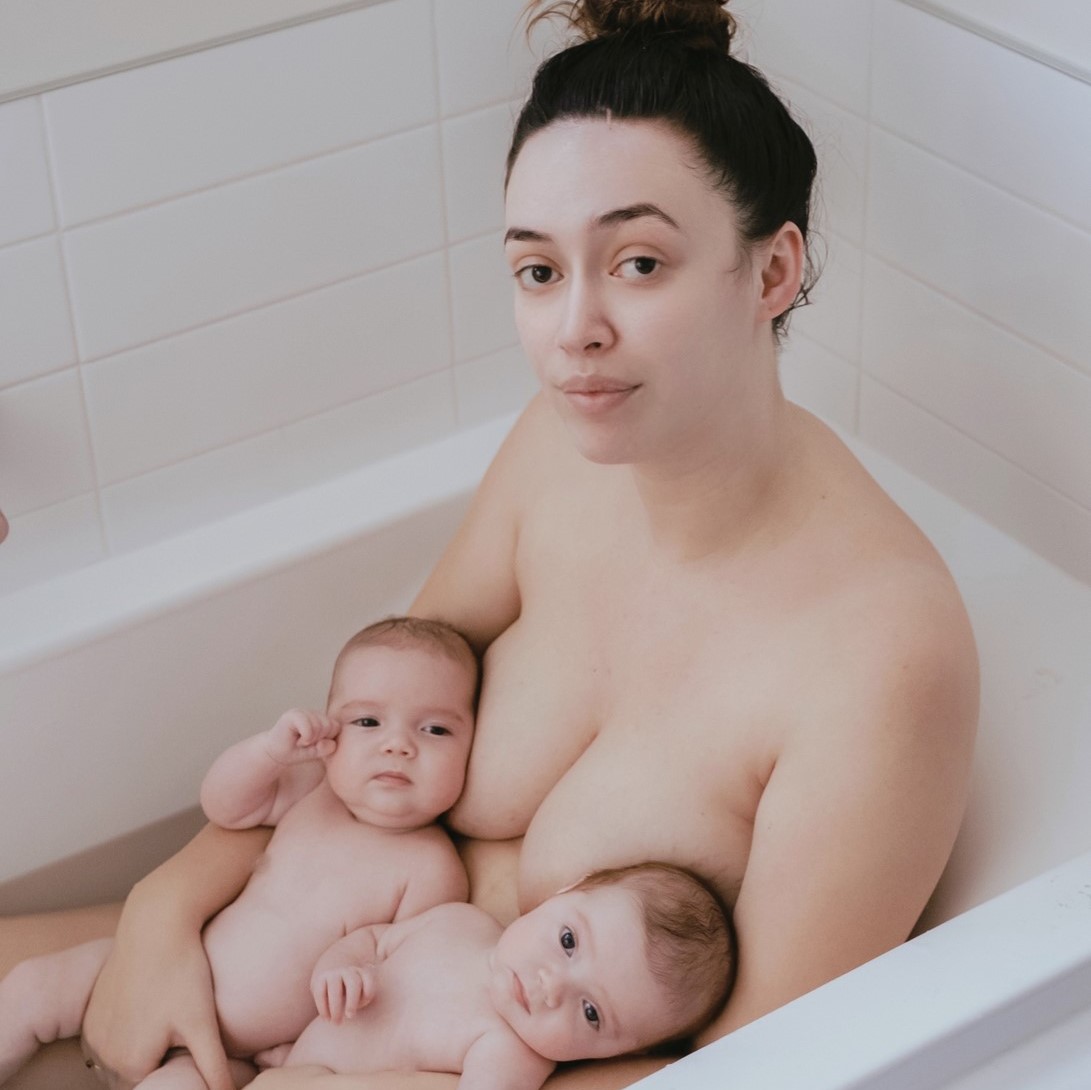How to Help Your Baby Adjust to the Start of Daylight Saving

To help with the daylight saving transition, some parents choose to shift their child’s nap times while others prefer to wing it.
To mark the start of daylight saving in New Zealand, clocks will go forward an hour on Sunday September 25, 2022 at 2am. Many babies – especially newborns and young infants – won’t notice the difference and will gradually adjust to this slight shift in their internal body clock over the coming days and weeks. However, toddlers, older pēpi and those in a more consistent routine may be more affected by the change.
The start of daylight saving marks the start of the summer months and effectively means your little one will start waking an hour later than usual (new time) and going to bed an hour later, if they aren’t transitioned into daylight saving gradually. While a battle at bedtime doesn’t sound like much fun, for those with early risers, daylight saving can help with not starting the day at the crack of dawn. We know, an hour isn’t much when your kid likes to wake up at 5am but every bit counts, right?
So, how does the adjustment period work? The idea is to incrementally shift your child’s awake times and nap times earlier by 15 minutes more each day, for the three days leading up to daylight saving starting. You should begin by adjusting their wake up time first thing in the morning, following suit when they go down for and get up from their nap/s, as well as for bed time.

Helpful tips:
- One of the best ways to help your child’s body clock adjust is to expose them to plenty of sunlight during the day. Just make sure you do so safely.
- If you find that your baby or toddler is confused by how light it now is at bedtime, the best thing you can do is keep their sleep environment consistent. Black out blinds are a great investment for ensuring a dark room that is more conducive to sleep and will help them settle down for their bedtime routine.
- Even though summer feels like it’s just around the corner, early mornings can still be quite chilly. This can often lead to early waking in the wee hours of the morning if your little one is feeling the cold so make sure you’re still dressing your pēpi in warm clothing for bed. Here’s how to check your baby’s temperature quickly and effectively and here’s how to safely dress your baby for bed.
- Don’t worry if you’re reading this article after after the daylight saving clock change, you haven’t missed the boat. You can work backwards. Move your child’s bedtime earlier by 15 minutes each night until you get back to the time you were used to before the change. E.g. if they’re now wanting to go to bed at 8pm but their bedtime is usually 7pm, put them down at 7:45pm tonight, then 7:30pm the night after and so on and so forth.



